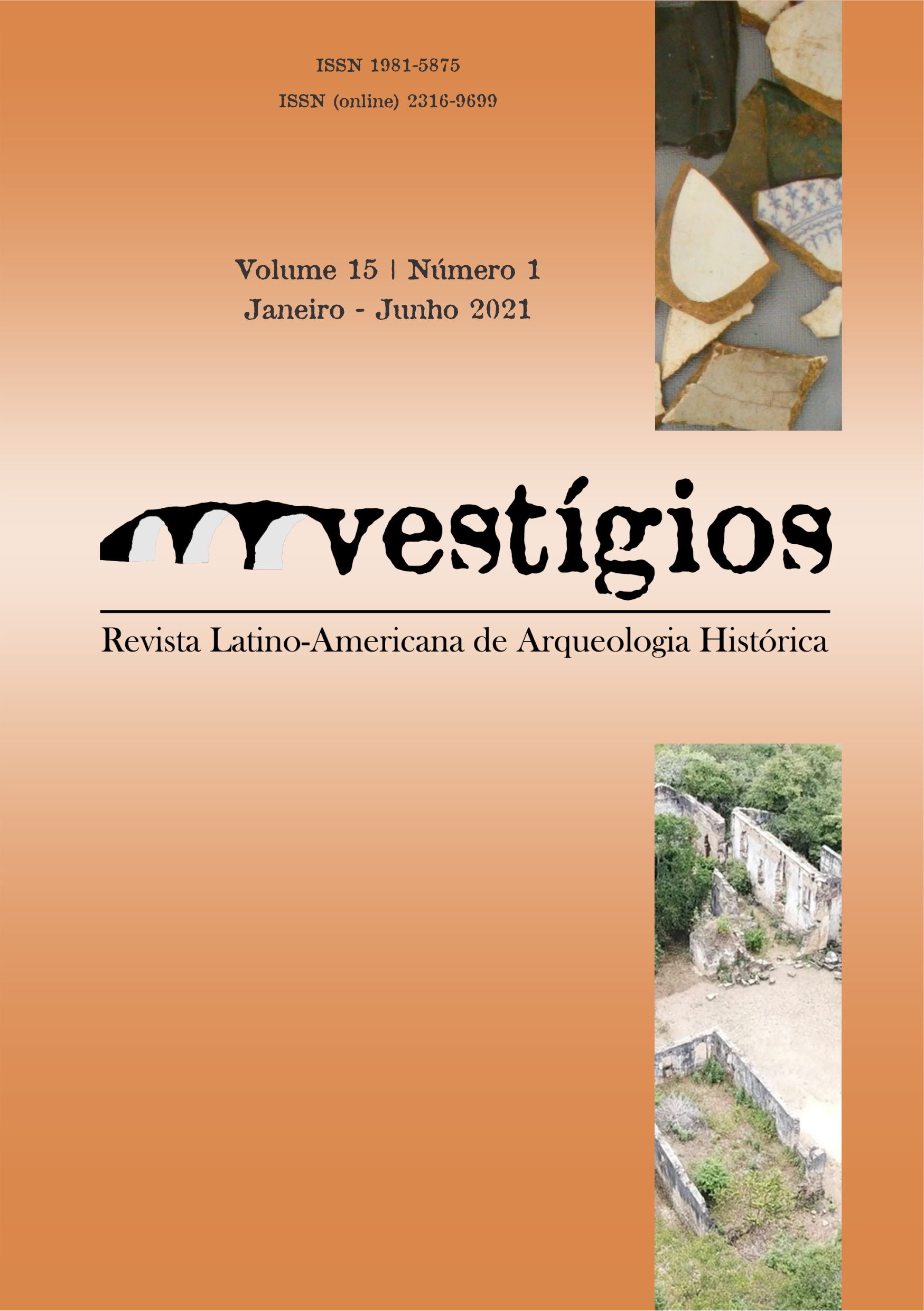Archaeology of the Digital
Anthropocene and Novacene of men and androids in the electronic game Detroit: Become Human
DOI:
https://doi.org/10.31239/vtg.v15i1.16373Keywords:
Archaeology of the Digital, electronic game, Anthropocene, Novacene, Detroit: Become HumanAbstract
This article aims to collaborate on the methodology of analysis of electronic games in digital environments under archaeological bias from “Detroit: Become Human”, launched in 2018 by the French developer Quantic Dream. The extra and intra-game archaeological landscapes will be analyzed, searching for the technofossils that corroborate the insertion of the game, as physical media, in the debate about the Anthropocene and, as digital media, in the recent hypothesis of geological dating listed by chemist and environmentalist James Lovelock named Novacene. The intention is, therefore, to present not a Digital Archaeology, but an Archaeology of the Digital, excavating and bringing to light traces that allow, at the same time, the understanding of the human use of cyber machines, as well as the representation of these machines in Programming codes written by humans.
Downloads
References
Antonil, A. J. (1982) Cultura e opulência do Brasil. Belo Horizonte: Itatiaia.
Baichwal, J. (Director). (2006) Manufactured Landscapes [Film]. Foundry Films; National Film Board of Canada.
Baichwal, J. et al. (Director). (2018) Anthropocene: The Human Epoch [Film]. Mercury Films.
Beiser, V. (2018) The World in a Grain: the story of sand and how it transformed civilization. New York: Riverhead Books.
Burtynsky, E. et al. (2018) Anthropocene. Gottingen: Steidl.
Carvalho et al. (2011) Emissão de óxido nitroso derivada do cultivo de arroz irrigado em várzeas tropicais inundadas. XXXIII Congresso Brasileiro de Ciência do Solo, 33.
Certini, G. & Scalenghe, R. (2011) Anthropogenic soils are the golden spikes for the Anthropocene. The Holocene, 21. 1269–1274.
Crutzen, P. J. & Stoermer, E. F. (2000) The “Anthropocene”. Global Change Newsletter, 41. 17-18.
Crutzen, P. J. (2002) The “Anthropocene”. J. Phys. IV France, 12 (10). 13-18.
Danaher, J. (2018) Robot Sex: Social and Ethical implications. Massachusetts: MIT Press.
Dibley, B. (2018) The technofossil: a memento mori. Journal of Contemporary Archaeology, 5 (1). doi: 10.1558/jca.33380.
Doughty, C. E. et al. (2010) Biophysical feedbacks between the Pleistocene megafauna extinction and climate: the first human-induced global warming? Geophysical Research Letters, 37, L15703.
Ellis, E. C. (2018) Anthropocene: A Very Short Introduction. Oxford: Oxford University Press.
Foucault, M. (2008) A Arqueologia do Saber. Tradução: Luiz Felipe Baeta Neves. Rio de Janeiro, Forense Universitária, 7 ed.
Gorman, A. (2019) Dr Space Junk vs The Universe – Archaeology and the Future. Massachusetts: MIT Press.
Gunkel, D. J. (2018) Robot Rights. Massachusetts: MIT Press.
Haff, P. K. (2013) Technology as a geological phenomenon: implications for human well-being. Geological Society, London, Special Publications, 395. 301-309. doi:10.1144/SP395.4
Hong, S. et al. (1994) Greenland ice evidence of hemispheric lead pollution two millennia ago by greek and roman civilizations. Science, 265 (5180). 1841-1843.
Huizinga, J. (2019) Homo Ludens. São Paulo: Perspectiva.
Lovelock, J. (1995) Gaia. Um novo olhar sobre a vida na Terra. Lisboa: Edições 70.
Lovelock, J. (2019) Novacene: the coming Age of Hyperintelligence. Massachusetts: MIT Press.
Martire, A. (2012) Arqueologia da paisagem mineira romana: a Hispânia e a Lusitânia. (Unpublished master's thesis). Museu de Arqueologia e Etnologia, Universidade de São Paulo, São Paulo.
Martire, A. (2017) Ciberarqueologia em Vipasca: o uso de tecnologias para a reconstrução-simulação interativa arqueológica. (Unpublished thesis). Museu de Arqueologia e Etnologia, Universidade de São Paulo, São Paulo.
Matarić, M. (2014) Introdução à robótica. São Paulo: Editora Unesp/Blucher.
Merriman, N. (2004) Public Archaeology. Routledge: London.
Molina, M. & Rowland, F. (1974) Stratospheric sink for chlorofluoromethanes: chlorine atom-catalysed destruction of ozone. Nature, 249. 810–812. doi:10.1038/249810a0
Mori, M. (2012) “The uncanny valley”. IEEE Robotics and Automation, 19 (2). 98-100.
Parker, G. (2014) Global Crisis: War, Climate Change and Catastrophe in the Seventeenth Century. New Haven: Yale University Press.
Reinhard, A. (2018) Archaeogaming: An Introduction to Archaeology in and on Video Games. New York: Berghahn Books.
Renfrew, C. & Bahn, P. (1991) Archaeology: theories, methods and practice. London: Thames & Hudson.
Rid, T. (2016) Rise of the machines: a cybernetic history. New York: W. W. Norton & Company, Inc.
Smith, B. D. & Zeder, M. A. (2013) The onset of the Anthropocene. Anthropocene, 4. 8-13.
Steffen, W. et al. (2004).Global change and the Earth System: a planet under pressure. Berlin, Heidelberg, New York: Springer.
Tinwell, A. (2014) The Uncanny Valley in Games and Animation. Boca Raton, London, New York: CRC Press.
Veiga, J. E. (2019) O Antropoceno e a Ciência do Sistema Terra. São Paulo: Editora 34.
Wiener, N (1971) Deus, Golem & Cia. Um comentário sobre certos pontos de contato entre cibernética e religião. Tradução: Leonidas Hegenberg & Octanny Silveira da Mota. São Paulo: Cultrix.
Zalasiewicz, J. et al. (2014) The technofossil record of humans. The Anthropocene Review, 1 (1). doi: 10.1177/2053019613514953
Zalasiewicz, J. et al. (2019) Technofossil Stratigraphy. The Anthropocene as a Geological Time Unit: a guide to the scientific evidence and current debate. Cambridge: Cambridge University Press.
Downloads
Published
How to Cite
Issue
Section
License
Copyright (c) 2021 Alex da Silva Martire

This work is licensed under a Creative Commons Attribution-NonCommercial 4.0 International License.

O trabalho Vestígios - Revista Latino-Americana de Arqueologia Histórica de https://periodicos.ufmg.br/index.php/vestigios/index está licenciado com uma Licença Creative Commons - Atribuição-NãoComercial 4.0 Internacional.
Baseado no trabalho disponível em https://periodicos.ufmg.br/index.php/vestigios/index.
Podem estar disponíveis autorizações adicionais às concedidas no âmbito desta licença em https://periodicos.ufmg.br/index.php/vestigios/index.


